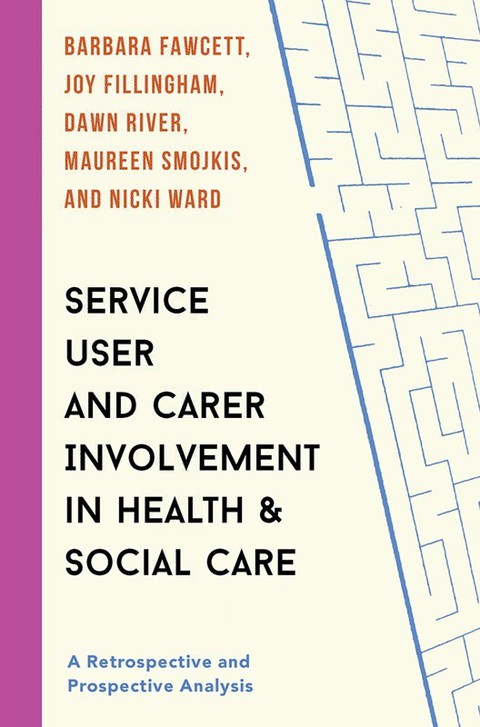Description
Efnisyfirlit
- Cover
- Halftitle
- Title
- Copyright
- Contents
- List of figures and tables
- Acknowledgements
- Introduction: setting the scene
- Part 1
- 1 ‘Patients’, ‘clients’, ‘service users’, ‘survivors’ and ‘carers’: backwards, forwards and places in between
- Introduction
- Terminology
- Involvement and participation: the Disability Rights Movement
- Consumerist underpinnings
- Conclusion
- Key questions for reflection
- 2 Bleeding boundaries: homogeneity and heterogeneity in user involvement
- Introduction
- Service user and carer involvement: the importance of belonging
- Homogeneity and heterogeneity – acknowledging experts by experiences or putting us into boxes?
- Carer, service user, professional, academic: shifting and intersectional identities
- Conclusion
- Key questions for reflection
- 3 Visibility and invisibility in service user and carer involvement
- Introduction
- Recognition and involvement in health and social care
- Effective barriers to involvement
- Affective barriers to involvement
- The interaction between effective and affective barriers
- Conclusion
- Key questions for reflection
- 4 International agendas: mirrors and mirages
- Introduction
- Globalisation
- ‘Involvement’ and international contexts
- Involvement and marginalised communities: international perspectives
- Examples of ‘involvement’: international contexts
- The ‘welfare’ ethos
- The importance of the role of professionals in agencies and communities
- Safeguards and risk and impact of privatisation
- Conclusion
- Key questions for reflection
- Part 2
- 5 ‘This could be Rotterdam (or anywhere)’: working in partnership with service users and carers on an international exchange programme
- Introduction
- Rebuilding health and social care within an international context
- Social work
- The global agenda for social work and social development
- The international exchange programme
- Conclusion
- Key questions for reflection
- 6 Exploring resilience and wellbeing: crossing the boundaries between service user and practitioner in mental health
- Introduction
- Wellbeing
- Resilience
- The Inpatient Care Forum
- Working in health and social care: resilience and practitioners
- Interdisciplinary Preceptorship Programme (IPP)
- Discussion
- Conclusion
- Key questions for reflection
- 7 Arts-based practice: learning from survivor artists
- Introduction
- Arts-based practice in health and social care
- The Survivor Arts Project
- The value of adopting a more creative approach
- Survivor artists’ perspectives
- The art of recovery
- Art: the process
- Recovery: the journey
- Mental health services
- Conclusion
- Key questions for reflection
- 8 Building voices: challenging stigma and constructing identities
- Context
- Role allocation and change
- Limitations imposed around roles
- Expectations towards service users, carers and patients as a result of role allocation
- Stereotyping and stigma
- Attitudinal link
- Holding onto yourself
- Conclusion
- Key questions for reflection
- 9 Conclusion: future dilemmas and directions
- We’re not there yet!
- Doing ‘involvement’
- Shared and differential experiences
- Building practices which build voices
- Conclusion
- Notes
- References
- Index






Reviews
There are no reviews yet.